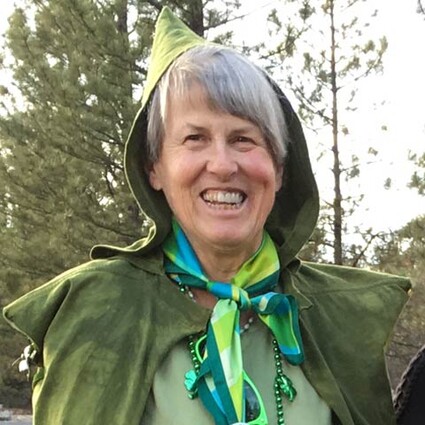Winter Solstice: More than a short, dark day
Last updated 12/10/2019 at Noon
People commonly refer to winter solstice as “the shortest day of the year,” but is that factual? Pat Leiser told The Nugget it’s just one of several “shortest days.”
“For us in the Northern Hemisphere, (solstice) marks the fourth of eight days when the sun appears at its lowest point in the sky,” she said.
These eight days are the shortest days of the year. Leiser said each day tops out at “8 hours and 53 minutes of sunlight, with nights lasting 15 hours and 7 minutes.”
Leiser is part of Friends of the Labyrinth, a group that welcomes people to gather for the summer and winter solstices every year at Sisters Community Labyrinth.
Most of the year, the sun appears to move more noticeably as the days change length and shadows grow shorter or longer. During the days of solstice, the sun seems to be stationary. Leiser noted that the word solstice derives from the Greek for “sun stopped.”
“Today, modern scientific measurement (in seconds) indicates that the sun’s lowest point is at about 8 p.m. on December 21,” said Leiser. “The official first day of winter begins December 22 as the sun very slowly begins to rise again.”
If the day is measured in minutes instead of seconds, however, the “sun-stopped” days last through December 25. Known in contemporary times as Christmas, on which Christians celebrate the birth of Jesus Christ, it has older origins.
According to Leiser, on December 25 the Romans celebrated the birthday of Apollo. In the Greek and Roman pantheons of gods and goddesses, Apollo was a god of light, sun, music, and poetry. The sun’s official charioteer, Apollo harnessed four horses to his golden chariot every day, then pulled the sun across the sky.
“As various ancient peoples began to note the sun’s position through the year, marking the winter and summer solstices, spring and fall equinoxes, they created corresponding celebrations,” Leiser said.
“In the cold seasons in the north, it is understandable that these celebrations are often associated with fires, for warmth and light,” she said. “Thus, the traditional Yule log at this time of year — although it is sometimes only replicated by a cake!”
Friends of the Labyrinth and New Oregon Arts & Letters will host a winter solstice gathering Saturday, December 21 at 4:30 p.m. (see story, page 3). The tradition of the labyrinth is also apparently related to the solar system, said Leiser.
A labyrinth’s path winds back and forth, which seems to reference “the apparent forward (eastern) progression, and intermittent backward (western) regression, of the five visible planets’ movements in the night sky in relation to the stars.”
In Northern Europe, Leiser observed, the four intervening “cross-quarter days” also marked a change of seasons and deserved honor. These traditions are kept alive by modern peoples who celebrate Lammastide in August (or Lughnasadh, as it is known in Gaelic), Mayday (Beltane or Beáltaine), and the various seasonal happenings of late October and early November (All Saint’s Day, Halloween, Samhain, and El Día de los Muertos).
Leiser said she became fascinated by “humans’ ingenuity in recording patterns in the earth’s annual orbit in the solar system” while teaching science to elementary school students.


















Reader Comments(0)